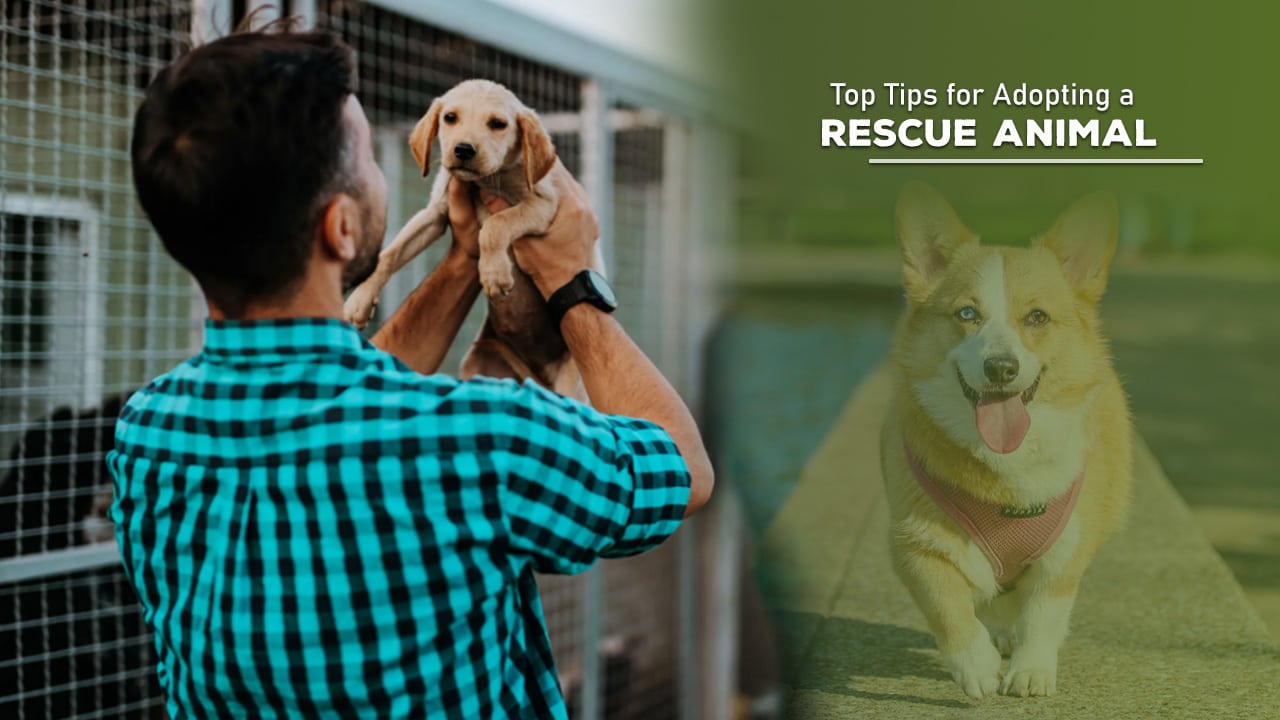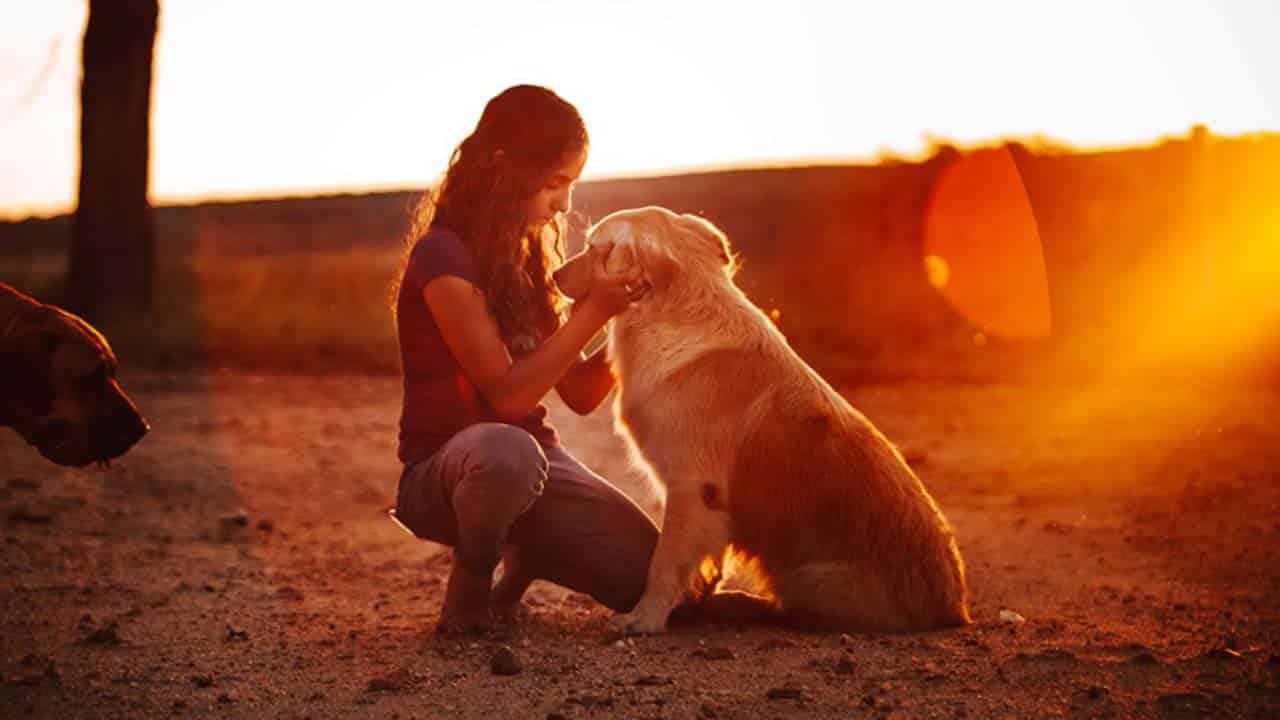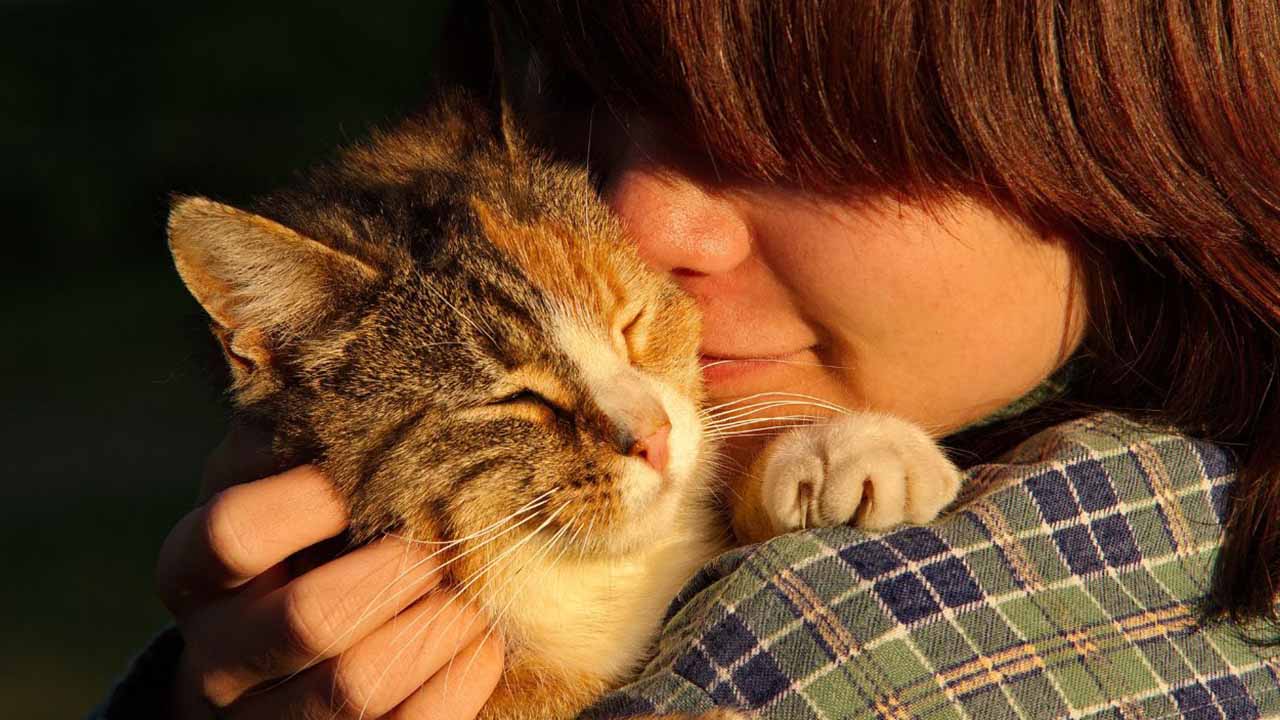Adopting a rescue animal is a rewarding experience that can bring joy and companionship while giving a deserving pet a loving home. Every year, millions of animals end up in shelters across the United States.
By choosing to adopt, you’re saving a life and making room for another animal in need. This guide will walk you through adopting a rescue animal, from preparation to post-adoption care, ensuring you’re well-equipped to provide a forever home for your new furry friend.
Understanding the Importance of Rescue Animal Adoption
Before diving into the tips, it’s crucial to understand why adopting a rescue animal is so important. In the United States alone, approximately 6.3 million companion animals enter shelters annually, according to the American Society for the Prevention of Cruelty to Animals (ASPCA).
Of these, about 3.1 million are dogs and 3.2 million are cats. Sadly, not all of these animals find homes. Each year, approximately 920,000 shelter animals are euthanised (390,000 dogs and 530,000 cats).
By adopting a rescue animal, you’re:
- Saving a life
- Reducing the demand for puppy and kitten mills
- Freeing up space in shelters for other animals in need
- Often saving money compared to buying from a breeder
- Getting a pet that’s likely already spayed/neutered and vaccinated
- Potentially adopting a pet that’s already trained
Now that we understand the significance of rescue animal adoption let’s explore the top tips to ensure a successful adoption process.
1. Assess Your Lifestyle and Living Situation
Before browsing adoption websites or visiting shelters, it’s essential to take an honest look at your lifestyle and living situation. This self-assessment will help you determine what kind of pet would best fit your home.
Consider the following factors:
- Living space: Do you live in a small apartment or a house with a yard? Some animals require more space than others.
- Time commitment: How much time can you dedicate daily to a pet? Some animals need more attention and exercise than others.
- Activity level: Are you an active person who enjoys outdoor activities, or do you prefer a more sedentary lifestyle?
- Work schedule: Do you work long hours or travel frequently? This might impact the type of pet you can care for.
- Financial situation: Can you afford the ongoing costs of pet ownership, including food, veterinary care, and potential emergencies?
- Allergies: Do you or anyone in your household have pet allergies?
- Family situation: Do you have young children or other pets? This can affect which animals might be suitable for your home.
By considering these factors, you’ll be better prepared to choose a pet that fits well with your lifestyle, increasing the chances of a successful long-term adoption.
2. Research Different Types of Pets
Once you’ve assessed your lifestyle, it’s time to research different types of pets. While dogs and cats are the most common rescue animals, don’t overlook other options like rabbits, guinea pigs, birds, or even reptiles. Each type of pet has unique needs and characteristics.
Here’s a brief overview of some common rescue animals:
Dogs
Dogs are popular pets known for their loyalty and affection. They come in various sizes, breeds, and temperaments. Consider factors like:
- Size: Small breeds might be better for apartments, while larger breeds often need more space.
- Energy level: Some breeds require lots of exercise, while others are content with a daily walk.
- Grooming needs: Long-haired breeds often require more grooming than short-haired ones.
- Age: Puppies need more time and training, while adult dogs might already have some training.
Cats
Cats are often more independent than dogs and can be well-suited to busy lifestyles. Consider:
- Indoor vs. outdoor: Decide if you want a cat that stays indoors or goes outside.
- Age: Kittens are playful but require more attention, while adult cats are often calmer.
- Coat length: Long-haired cats require more grooming than short-haired ones.
- Personality: Some cats are very social, while others are more aloof.
Rabbits
Rabbits can make great pets for those with limited space. They’re generally quiet and can be litter-box trained. Consider:
- Space needs: Rabbits need room to hop and play, even if kept in a cage.
- Social needs: Many rabbits do best with a companion rabbit.
- Lifespan: Rabbits can live 8-12 years, a long-term commitment.
Guinea Pigs
Guinea pigs are social, gentle animals that can be good pets for families with children. Consider:
- Social needs: Guinea pigs are happiest in pairs or small groups.
- Space requirements: They need a large cage or enclosure with running room.
- Lifespan: Guinea pigs typically live 4-8 years.
Birds
Birds can be fascinating and intelligent pets. They come in a wide variety of species, each with unique needs. Consider:
- Noise level: Some birds can be loud, which might not suit apartment living.
- Lifespan: Many birds have long lifespans, with some parrots living 50+ years.
- Social needs: Many birds require a lot of interaction and mental stimulation.
Remember, these are just general characteristics. Regardless of species or breed, individual animals can have unique personalities and needs.
3. Find Reputable Rescue Organizations
Once you know what type of pet you want, it’s time to find reputable rescue organisations. There are many ways to locate these organisations:
- Online databases: Websites like Petfinder.com and Adopt-a-Pet.com allow you to search for adoptable animals in your area.
- Local animal shelters: Visit your local animal shelters in person. Many have websites listing their available animals.
- Breed-specific rescues: If you’re interested in a specific breed, look for rescue organisations dedicated to that breed.
- Social media: Many rescue organisations have an active social media presence where they post about animals available for adoption.
- Veterinary offices: Local vet offices often have information about rescue organisations in the area.
- Word of mouth: Ask friends, family, or coworkers who have adopted pets for recommendations.
When evaluating a rescue organisation, look for the following signs of a reputable operation:
- Transparency: They should be open about their policies, procedures, and fees.
- Health practices: Animals should receive veterinary care, vaccinations, and spaying/neutering before adoption.
- Home checks: Many reputable rescues conduct home checks to ensure animals are in suitable environments.
- Support: They should offer support and resources after you adopt.
- Non-profit status: Many legitimate rescues are registered non-profit organisations.
Remember, reputable rescues are more interested in finding good homes for their animals than making money. Trust your instincts and look elsewhere if something feels off about an organisation.
4. Prepare Your Home
Before bringing your new pet home, preparing your living space is crucial. This preparation will help your new pet feel safe and comfortable, easing their transition into their new environment. Here are some steps to take:
For All Pets:
- Create a safe space: Designate an area where your new pet can retreat if they feel overwhelmed. This could be a spare room, a corner with a bed, or a dog crate.
- Remove hazards: Look around your home from your pet’s perspective. Remove or secure anything that could be dangerous if chewed or swallowed, such as electrical cords, toxic plants, or small objects.
- Purchase essential supplies: Get the basics before bringing your pet home. This typically includes:
- Set up a feeding station: Choose a quiet area for your pet’s food and water bowls.
For Dogs:
- Secure your yard: If you have a yard, check that fences are secure and there are no escape routes.
- Get a leash and collar: Choose a sturdy leash and a collar with an ID tag.
- Puppy-proof (if applicable): If adopting a puppy, you may need to use baby gates to restrict access to certain areas.
For Cats:
- Set up a litter box: Place the litter box in a quiet, accessible location.
- Provide vertical space: Cats love to climb and perch. Consider cat trees or shelves.
- Scratching posts: Provide appropriate scratching surfaces to protect your furniture.
For Small Animals (Rabbits, Guinea Pigs, etc.):
- Set up a cage or enclosure: Ensure it’s spacious enough for your pet to move around comfortably.
- Provide appropriate bedding: Use pet-safe bedding materials.
- Add enrichment items, including tunnels, hideaways, and chew toys.
For Birds:
- Set up a cage: Ensure the cage is appropriate for the species and size of your bird.
- Provide perches and toys: Birds need mental stimulation and places to perch.
- Consider cage placement: Place the cage in a room where the bird can interact with family and have quiet times.
Remember, these are general guidelines. Your pet’s specific needs may vary depending on the species, breed, and individual animal. Always consult with the rescue organisation or a veterinarian for specific advice.
5. Schedule a Meet and Greet
Once you’ve found a potential pet, it’s time to schedule a meet and greet. This is a crucial step in the adoption process as it allows you to interact with the animal and see if you’re a good match. Here are some tips for a successful meet and greet:
- Bring all family members: If possible, ensure all family members living with the pet are present. This includes other pets if the rescue allows it.
- Take your time: Don’t rush the interaction. Spend enough time to get a sense of the animal’s personality.
- Observe the animal’s behaviour: Watch how the pet interacts with you and your family. Are they shy, outgoing, energetic, or calm?
- Ask questions: This is your opportunity to learn more about the pet’s history, health, and behaviour. Some questions to consider:
- Interact naturally: Mimi, how would you interact with the pet at home? If it’s a dog, try walking them. For a cat, see how they respond to gentle petting.
- Don’t feel pressured: If you don’t feel a connection, it’s okay. The right pet is out there, and it’s better to wait than to adopt an animal you’re unsure about.
- Consider multiple visits: Visit the pet more than once. Some animals may behave differently on a second or third meeting as they become more comfortable with you.
Remember, adopting a pet is a long-term commitment. Feeling confident in your choice is essential before proceeding with the adoption.
6. Complete the Adoption Process
If you’ve found the right pet and are ready to adopt, the next step is to complete the adoption process. This process can vary between different rescue organisations but generally includes the following steps:
- Application: Fill out an adoption application. This usually includes questions about your living situation, experience with pets, and how you plan to care for the animal.
- Interview: Many rescues interview to ensure you’re prepared for pet ownership and that the animal is a good fit for your home.
- Home check: Some organisations perform a home check to ensure your living space is suitable for the pet.
- Reference check: You may need to provide references who can vouch for your ability to care for a pet.
- Adoption fee: Most rescues charge an adoption fee. This typically covers vaccinations, spaying/neutering, and other veterinary care the animal has received.
- Adoption contract: You’ll need to sign an adoption contract. This may include agreements about returning the pet to the rescue if you can no longer care for it.
- Scheduling pick-up: Once approved, you’ll schedule a time to bring your new pet home.
Be patient during this process. Rescues want to ensure their animals are going to good homes so that they may be thorough in their screening. Remember, this process is designed to create successful, lasting adoptions.
7. Prepare for the First Few Days
The first few days with your new pet are crucial for establishing a bond and helping them adjust to their new home. Here are some tips to make the transition smoother:
- Take time off: Take a few days off work to help your new pet settle in.
- Stick to a routine: Establish a consistent routine for feeding, walks (for dogs), and playtime.
- Limit visitors: Keep things calm and quiet for the first few days. Too much excitement can be overwhelming for a new pet.
- Be patient: Your new pet may take some time to adjust. They might be shy, anxious, or even aloof at first. Give them time and space to get comfortable.
- Slowly introduce new areas: If you have a large home, gradually introduce your pet to new places to avoid overwhelming them.
- Use positive reinforcement: Reward good behaviour with treats, praise, and affection.
- Monitor eating and bathroom habits: Keep an eye on your new pet’s appetite and bathroom habits. Changes could indicate stress or health issues.
- Provide comfort items: Bring something from the shelter that smells familiar to your pet, like a blanket or toy.
- Start training early: Begin establishing rules and basic training from day one, but keep sessions short and positive.
- Be consistent: Ensure all family members are on the same page about rules and routines for the new pet.
Remember, every animal is different. Some may adjust quickly, while others may take weeks or months to settle in fully. Patience and consistency are key.
8. Schedule a Veterinary Check-up
Even if a vet at the rescue has recently seen your new pet, it’s essential to schedule a check-up with your veterinarian within the first week or two after adoption. This serves several purposes:
- Establish a relationship: This visit helps establish a relationship with your vet, who will be an essential partner in your pet’s health care.
- Comprehensive health check: Your vet can perform a thorough examination to catch any health issues the shelter might have missed.
- Review medical history: Bring any medical records provided by the rescue. Your vet can review these and explain any ongoing health needs.
- Update vaccinations: If needed, your vet can update your pet’s vaccinations.
- Discuss preventative care: Your vet can recommend appropriate treatments for fleas, ticks, and heartworms.
- Microchipping: If your pet isn’t already microchipped, discuss this option with your vet.
- Nutrition advice: Your vet can advise your pet on the best diet based on age, breed, and health status.
- Behaviour discussion: If you’ve noticed any concerning behaviours, this is an excellent time to discuss them with your vet.
Regular veterinary care is crucial for maintaining your pet’s health and catching potential issues early. After this initial visit, follow your vet’s recommendations for regular check-ups.
9. Focus on Training and Socialization
Training and socialisation are essential aspects of pet ownership, particularly for dogs, but beneficial for many types of pets. Here are some key points to consider:
For Dogs:
- Basic obedience: Start with basic commands like “sit,” “stay,” “come,” and “leave it.”
- Leash training: Start working on this immediately if your dog isn’t already leash-trained.
- House training: Even adult dogs might need a refresher on house training in a new environment.
- Crate training: If you plan to use a crate, introduce it positively and gradually.
- Socialisation: Expose your dog to various people, animals, and environments. This helps prevent fear and aggression issues. Be sure to do this gradually and in a controlled manner to avoid overwhelming your dog.
- Positive reinforcement: Use treats, praise, and play to reward good behaviour. This is more effective than punishment-based training methods.
- Consistency: Ensure all family members use the same commands and rules to avoid confusing your dog.
- Professional help: Consider enrolling in an obedience class or working with an experienced dog trainer, especially if you’re a first-time dog owner or your dog has specific behavioural issues.
For Cats:
- Litter box training: Most cats instinctively use a litter box, but make sure your new cat knows where it is.
- Scratch training: Provide appropriate scratching posts and redirect your cat if they scratch furniture.
- Socialisation: Gradually introduce your cat to new people and experiences. Some cats may need more time to adjust than others.
- Playtime: Regular play sessions help build your bond and provide necessary exercise and mental stimulation.
For Small Animals:
- Handling: Handle your small pet regularly to get them used to human contact.
- Litter training: Some small animals, like rabbits, can be litter box trained.
- Enrichment: Provide toys and activities to keep your pet mentally stimulated.
For Birds:
- Step-up training: Teach your bird to step onto your hand on command.
- Vocabulary: Many bird species can learn to mimic words or sounds.
- Out-of-cage time: Supervise your bird during out-of-cage time to ensure safety and positive interactions.
Remember, training and socialisation are ongoing processes. Be patient and consistent, and don’t hesitate to seek professional help.
10. Provide Mental and Physical Stimulation
All pets, regardless of species, need mental and physical stimulation to stay healthy and happy. Here are some ways to keep your new pet engaged:
For Dogs:
- Daily walks: Regular walks provide exercise and mental stimulation through new sights and smells.
- Puzzle toys: Use toys that dispense treats to keep your dog mentally engaged.
- Training sessions: Short, daily training sessions provide mental exercise.
- Playtime: Play fetch, tug-of-war, or other games your dog enjoys.
- Agility courses: Set up a simple agility course in your yard for added physical and mental challenges.
For Cats:
- Interactive toys: Use wand toys or laser pointers for play sessions.
- Climbing structures: Cat trees or wall-mounted shelves allow cats to climb and perch.
- Puzzle feeders: These can make mealtime more engaging.
- Window perches: Provide a view of the outdoors for mental stimulation.
- Rotating toys: Switch out toys regularly to keep things interesting.
For Small Animals:
- Tunnels and hideaways: These provide both exercise and security.
- Foraging opportunities: Hide treats around their enclosure for them to find.
- Exercise wheels: For animals like hamsters and mice.
- Chew toys: Provide safe items for natural chewing behaviours.
For Birds:
- Foraging toys: Hide treats in toys to encourage natural foraging behaviours.
- Varied perches: Different sizes and textures of perches exercise their feet.
- Mirrors and bells: These can provide entertainment but are used in moderation.
- Out-of-cage time: Supervised time outside the cage allows for exploration and exercise.
Remember, the amount and type of stimulation needed can vary significantly between individual animals. Observe your pet to see what they enjoy most.
11. Maintain Your Pet’s Health
Keeping your pet healthy involves more than just visits to the vet. Here are some critical aspects of maintaining your pet’s health:
- Proper nutrition: Feed your pet a balanced diet appropriate for their species, age, and health status. Consult with your vet about the best food options.
- Regular exercise: Ensure your pet gets appropriate physical activity to maintain a healthy weight and promote overall well-being.
- Grooming: Regular grooming helps keep your pet clean and allows you to check for abnormalities. This includes:
- Parasite prevention: Keep up with flea, tick, and worm prevention as your vet recommends.
- Annual check-ups: Even if your pet seems healthy, veterinary yearly exams can catch potential issues early.
- Vaccinations: Stay up-to-date on necessary vaccinations.
- Dental health: Some pets may need professional dental cleanings besides home care.
- Weight management: Maintain a healthy weight for your pet through proper diet and exercise.
- Mental health: Provide adequate mental stimulation and address anxiety or stress issues.
- Spaying/neutering: If not already done, consider spaying or neutering your pet for health benefits and to prevent unwanted litters.
12. Build a Support Network
Having a support network can be invaluable when adopting a rescue animal. This network can provide advice, help in emergencies, and support your journey as a pet owner. Consider including:
- Your veterinarian: They’re your primary resource for health-related questions and concerns.
- The rescue organisation: Many rescues offer post-adoption support and advice.
- Fellow pet owners: Join local pet owner groups or online forums to connect with others.
- Professional trainer: For dogs, having a trusted trainer to call on can be helpful.
- Pet sitter or dog walker: Find reliable help when you’re away or unable to care for your pet.
- Groomer: If your pet requires professional grooming, find a groomer you trust.
- Pet supply store staff: Knowledgeable staff can advise on food, toys, and other supplies.
- Emergency vet: Know the location and contact information for a 24-hour emergency vet clinic.
Remember, it’s okay to ask for help or advice when you need it. Pet ownership is a learning experience; having support can make it more enjoyable and less stressful.
Takeaway
Adopting a rescue animal is a life-changing decision that brings immense joy and fulfilment. However, it also comes with responsibilities that require careful consideration and preparation.
By following the tips outlined in this guide—assessing your lifestyle, researching different types of pets, finding reputable rescue organizations, preparing your home, and more—you can ensure a successful adoption experience.
Remember, patience, consistency, and a willingness to learn are key to creating a loving and supportive environment for your new pet. With the right approach, you’ll provide a forever home for an animal in need and build a rewarding and lasting bond that enriches both your life and theirs.












































